24 Famous German Meat Products You Need to Taste
German meat products represent a culinary heritage steeped in tradition and flavor complexity that goes far beyond basic sausage making.
Regional craftsmanship and time-honored techniques transform simple ingredients into remarkable delicacies that reflect cultural pride and generations of expertise.
Each meat product tells a unique story of local ingredients, seasonal variations, and familial recipes passed down through decades.
The precise preparation methods, carefully selected spices, and meticulous smoking processes contribute to distinctive textures and robust taste profiles.
Germany's meat culture embodies more than just food; it symbolizes community, celebration, and deep-rooted agricultural practices.
These carefully crafted delicacies showcase an intricate balance between innovation and respect for traditional cooking methods.
You'll find remarkable diversity in technique, flavor, and regional specialization throughout the country's meat landscape.
Uncover the fascinating world of 24 famous German meat products that will tantalize your taste buds:
German Meat Product Types Worth Seeking Out
Discover Germany’s rich tradition of sausages, cured meats, and savory specialties. Each type is crafted for hearty meals and good company.
Nordhessische Ahle Wurscht
Nordhessische Ahle Wurscht represents a distinctive raw pork sausage steeped in North Hessian culinary tradition.
Each sausage emerges uniquely flavored through individual spice blends and precise maturation processes.
Craftsmen create this specialty using minced pork, salt, saltpeter, and carefully selected ground spices.
Regional variations mean no two sausages taste identical, with meat quality, spice combinations, climate, and aging stages influencing final flavor profiles.
Slow maturation develops deep, complex taste characteristics that distinguish this regional delicacy.
Small-batch production ensures exceptional quality and authenticity.
Locals typically enjoy Nordhessische Ahle Wurscht sliced alongside fresh bread.
German sausage enthusiasts prize this North Hessian specialty for its rich, nuanced taste and traditional preparation methods.
Pfefferbeier
Pfefferbeier represents a robust German salami crafted from premium pork shoulder and back fat, blending black and white pepper with aromatic spices like garlic powder, mace, and paprika.
Butchers carefully grind selected meat cuts and mix them with precise seasoning proportions.
Natural casings encase the spiced meat mixture, which transforms into distinctive thin, elongated sausages.
Fermentation begins with a 24-hour hanging process that develops complex flavor profiles.
Cold-smoking techniques impart a rich, deep color to the salami's exterior.
Skilled artisans ensure optimal texture by allowing additional drying time before serving.
Salt and spice combinations create an intense, peppery flavor signature.
Each slice promises a traditional German charcuterie experience steeped in meticulous preparation methods.
Schwarzwalder Schinken
Black Forest ham dominates European smoked meat markets as a prized regional specialty from Germany's southwestern woodlands.
Traditional producers carefully cure pork hind legs using salt, garlic, coriander, pepper, and juniper berries before cold smoking with local fir wood.
Dark exterior layers contrast with vibrant red inner meat, creating a distinctive appearance and complex flavor profile.
Smoky aromas and a consistent 20% fat content contribute to its rich taste experience.
Nutty and spicy notes make this ham incredibly versatile for raw consumption or cooking applications.
Restaurants across Europe frequently feature this premium meat product.
Boneless preparation ensures easy slicing and serving.
Regional techniques passed through generations guarantee authentic flavor and quality.
Holsteiner Katenschinken
Katenschinken is a prized North German ham distinguished by its unique eight-week smoking process over open fires in Schleswig-Holstein.
Artisan producers carefully smoke pork meat to create a mahogany-colored ham with a strong aroma and surprisingly mild flavor.
Traditionally prepared using open fire techniques, modern smokehouses now use specialized smoking chambers and barns to craft this delicate specialty.
Holstein ham develops a distinctive taste through slow smoking that preserves its tender texture and rich color.
Skilled butchers ensure the ham maintains its signature deep mahogany shade without becoming black or sooty.
Restaurant chefs and home cooks frequently slice Katenschinken for sandwiches, bread rolls, and appetizer platters.
Regional traditions have maintained this ham's authenticity for generations.
German meat preservation techniques showcase exceptional craftsmanship in every carefully prepared slice.
Westfalischer Knochenschinken
Westphalian ham represents a premium German delicacy crafted through meticulous hand-production techniques that transform ordinary pork into an extraordinary culinary experience.
Salt and specialized herbs are carefully rubbed into ham and bone during an initial curing stage.
Aging rooms provide an essential environment for developing complex flavor profiles.
Beech and juniper wood smoking chambers impart a distinctive dark red color and golden-yellow rind to the meat.
Specialized salt mixtures and precise aging techniques create a uniquely mild and nutty taste.
Thin slices serve best as an appetizing starter alongside pretzels and complementary cheeses.
Regional Westphalian pig farming traditions underpin this exceptional meat's extraordinary character.
Landjager
Landjager sausages emerge as compact, protein-packed provisions beloved by Swiss, German, French, and Austrian travelers who need reliable sustenance during outdoor adventures.
Rectangular in shape and pressed with precision, these semi-dried meat products blend pork, beef, and lard with red wine and selected spices for robust flavor profiles.
Hunters and backpackers especially appreciate their lightweight, portable nature and long-lasting preservation qualities.
Smoky undertones develop during traditional preparation methods that involve careful pressing and drying techniques.
Mountain travelers have relied on landjager as essential trail nutrition for generations.
German linguistic roots connect the sausage's name to "land hunter," reflecting its practical origins among mobile outdoor professionals.
Each compact sausage represents generations of European meat preservation expertise.
Regional butchers craft these protein-dense snacks using time-honored techniques passed through family traditions.
Flonz
Flonz is a traditional Rhineland blood sausage originating in Cologne, crafted from lean meat, pig parts, and small fat pieces.
Regional sausage makers carefully blend pig rinds, head, and blood with salt and select spices to create this distinctive delicacy.
Prohibited from using spice extracts or artificial flavorings, authentic flonz maintains its genuine regional character.
Fat pieces ranging from 5 to 10 mm provide textural contrast within the firm sausage.
Local residents have cherished this affordable specialty for over a century.
Kolsche cuisine frequently incorporates flonz in dishes like Himmel und Eerde.
Street vendors often serve flonz with buns and onion rings, playfully dubbing it "Kolsche caviar." Germans consider this sausage a beloved regional staple with deep culinary roots.
Greuener Salami
Greuener salami represents a century-old German charcuterie tradition crafted by master butcher Carl Auene in Thuringia.
Founded in 1864, this regional specialty features a distinctive coarse grain generously speckled with robust black pepper and aromatic garlic.
Premium pork forms the base of this classic salami, which the company also produces using alternative meats like wild boar, venison, and poultry.
Each slice delivers an intense, rustic flavor profile that reflects traditional German meat preservation techniques.
Regional butchers carefully select high-quality ingredients to ensure superior taste and texture.
Small-batch production maintains the salami's authentic character and time-honored recipe.
Meat enthusiasts worldwide now recognize Greuener salami as a benchmark of German charcuterie excellence.
Thuringer Leberwurst
Thuringer Leberwurst represents a treasured German sausage steeped in regional tradition, crafted with at least 51% of ingredients sourced directly from Thuringia.
Regional butchers carefully prepare this specialty by combining ground liver with distinctive seasonings like salt, braised onions, ground pepper, and Thuringian marjoram to create a unique flavor profile.
Sausage makers cold-smoke the product over beech wood, developing a signature golden-yellow color that signals its authentic preparation.
Farm slaughter festivals continue to celebrate this culinary heritage, where locals enjoy fresh sausages straight from the pan.
Spices and preparation methods reflect generations of butchering expertise passed through Thuringian families.
Historical techniques remain unchanged, preserving the sausage's authentic character.
Traditional preparation connects modern Germans to their agricultural roots.
Modest ingredients transform into a beloved regional delicacy that represents Thuringia's gastronomic identity.
Sulzwurst
Sulzwurst represents a classic German cold cut featuring chopped pork head meat, rinds, and occasional offal pieces suspended in a savory aspic.
Bavarian butchers traditionally prepare this rustic specialty by cooking and seasoning animal parts with carefully selected spices like pepper and salt.
Regional variations often include gherkins and onions to enhance the meat's rich flavor profile.
German households typically serve sulzwurst alongside pickled vegetables, dark bread, and crispy fried potatoes.
Preserved through a unique cooking and jellying process, sulzwurst provides a hearty protein option for breakfast or light meals.
Germans consider this dish a nostalgic reminder of traditional meat preservation techniques.
Protein-rich and intensely flavored, sulzwurst showcases rural German culinary craftsmanship.
Meat enthusiasts appreciate its complex texture and robust taste.
Presskopf
Presskopf wurst packs a rich German culinary tradition of transforming less desirable meat cuts into a flavorful sausage.
German butchers craft this unique head cheese using pork or calf head meat, rinds, bacon, heart, and sometimes blood or muscle meat.
Skilled meat artisans season the mixture with garlic, onions, pepper, salt, nutmeg, and sugar before stuffing it into sausage casings.
Regional variations include names like presssack, presswurst, and schwartenmagern.
German speakers recognize presskopf as meaning "pressed head," which describes its preparation method of pressing the sausage after scalding.
Butchers carefully select and blend meat parts to ensure a rich, smooth texture.
Traditionalists enjoy this sausage as a classic cold cut or appetizer.
Germany's meat preservation techniques shine through this hearty sausage that wastes no part of the animal.
Thuringer Rotwurst
Thuringian Blood Sausage is a rustic German delicacy crafted from pork, pork liver, and a blend of aromatic spices like black pepper, marjoram, allspice, cloves, and onions.
Regional butcher shops across Thuringia proudly display this traditional sausage with deep cultural roots.
Farmers have prepared this hearty specialty during seasonal slaughter festivals for generations.
Salt and carefully selected spices give the sausage its distinctive robust flavor.
Butchers mix ground pork and liver to create a rich, dense texture.
Regional traditions keep this culinary practice alive in rural communities.
German meat preservation techniques contribute to the sausage's enduring popularity.
Bierschinken Wurst
Bierschinken wurst are hearty German sausages packed with chunky pickled pork pieces and rich spices like mace, ginger, and cardamom.
German butchers craft these meaty sausages by blending finely ground pork with bacon, salt, and aromatic spices before stuffing the mixture into natural casings.
Smoky variations add extra depth to the flavor profile, while some recipes incorporate beef or poultry for variety.
Beer traditions inspire its name, though no actual beer goes into the sausage itself.
Restaurants and home kitchens serve bierschinken sliced thin on fresh bread rolls or wood-fired bread.
Traditional accompaniments include gherkins and boiled eggs.
Cold beer provides the perfect complement to these savory sausage slices.
Regional German butchers continue making this classic wurst using time-honored techniques.
Teewurst
Teewurst is a uniquely spreadable German sausage crafted from finely ground pork or pork and beef blended with bacon.
Cold-smoked over beechwood and carefully fermented, this sausage develops a mild, slightly sour flavor profile that makes it perfect for spreading on crackers or open-faced sandwiches.
German culinary tradition originally designed teewurst specifically for tea time, which explains its distinctive name derived from the German word "tee" meaning tea.
During preparation, butchers carefully season the meat mixture and stuff it into casings before smoking and fermentation processes.
The traditional sausage requires no additional cooking due to its specialized preservation method.
Fermentation ensures the sausage becomes safe to consume while developing its signature soft texture.
Regional German butchers have perfected this sausage-making technique over generations.
Teewurst remains a beloved staple in German charcuterie and breakfast traditions.
Halberstadter Wurstchen
Halberstadter Wurstchen are iconic German sausages that pioneered global preserved meat distribution through innovative packaging.
Entrepreneur Friedrich Heine revolutionized sausage production in 1896 by developing a method for jarring and shipping these delicate meat products worldwide.
Thin sausages made with sheep casings feature a distinctive smoky flavor from traditional beechwood fire smoking techniques.
German meat processors used a patented smoking process that required 24 to 36 hours of careful ripening.
East German authorities nationalized Heine's original company in 1948, renaming it VEB Halberstadt Meats.
Rigorous preparation methods ensured consistent quality and taste across different production batches.
Extended smoking periods contributed to the sausages' complex flavor profile.
Specialized sheep casings provided a unique texture and appearance that distinguished these sausages from other German meat products.
Sulze
Sulze is a traditional German meat jelly showcasing pork's rich culinary heritage, transforming humble meat cuts into a sophisticated cold dish.
Gelatinous and translucent, this aspic emerges from slow-simmered pork knuckles, ears, and tongue combined with aromatic vegetables and spices.
Collagen-rich meats naturally create a smooth gelatin that suspends tender meat pieces throughout its clear broth.
Cooks carefully strain the flavorful liquid after cooking and mix small meat chunks back into the broth.
Chilling overnight allows the jelly to set completely in a mold, creating a firm, transparent presentation.
Austrian cuisine also embraces this protein-packed dish as a classic cold appetizer or light meal.
Germans traditionally serve sulze as a hearty lunch or dinner option during colder months.
Regional variations might include different meat selections or subtle seasoning adjustments that reflect local culinary traditions.
Gottinger Feldkieker
Gottinger feldkieker is a distinctive German pork sausage originating from Lower Saxony's Gottingen region with centuries of traditional craftsmanship.
Crafted by carefully air-drying raw pork inside a pig's bladder, this sausage distinguishes itself from Gottinger Stracke through unique production techniques.
Regional butchers meticulously prepare the sausage using specific diameter and weight specifications that influence its final flavor profile.
German meat preservation traditions deeply influence its manufacturing process, ensuring consistent quality and authentic taste.
Eighteenth-century sausage-making methods continue to guide its production in Lower Saxony.
Artisan butchers select premium pork cuts for optimal texture and richness.
Careful air-drying transforms the raw meat into a concentrated, flavorful delicacy.
Sausage enthusiasts prize Gottinger feldkieker for its robust and distinctive regional character.
Gottinger Stracke
Gottinger stracke is a distinctive Austrian pork sausage crafted from carefully selected fresh meat cuts blended with aromatic spices.
Makers mince shoulder, leg, and belly pork and season it with salt, pepper, coriander, nutmeg, and garlic to create its signature flavor profile.
Subtle additions of sugar, yeast, and rum help control fermentation and prevent sourness during aging.
Thin straight casings hold the meat mixture as it matures for approximately four weeks.
German sausage traditions inspire this lean, long cured product with complex seasoning.
Compared to similar Gottinger Feldkieker, this sausage has unique shape and weight characteristics.
Regional Austrian meat processing techniques contribute to its nuanced preparation method.
Sausage enthusiasts appreciate its balanced spice blend and carefully controlled fermentation process.
Ammerlander Schinken
Ammerland ham stands out as a premium dry-cured German specialty originating from Lower Saxony's distinctive meat preservation traditions.
Regional butchers carefully salt premium ham on the bone using sea salt and brown sugar for several weeks, creating a deeply flavorful product.
Traditional spices like pepper, pimento, and juniper occasionally enhance the meat's natural profile.
High-quality cuts develop complex individual characteristics without extensive seasoning.
Salt curing transforms raw ham into a rich, concentrated delicacy.
Meat selection determines the ham's ultimate depth and complexity.
Regional techniques passed through generations ensure consistent quality.
Careful preparation transforms simple pork into an exceptional regional delicacy.
Zungenwurst
Zungenwurst is a robust German blood sausage showcasing pickled tongue pieces within a rich meat blend sourced exclusively from animal parts.
Bavarian butchers craft this distinctive sausage by mixing pork blood and fat with carefully chopped pickled tongue segments.
Traditional preparation involves seasoning the mixture with ground pepper and optional spices to enhance its intense flavor profile.
German meat preservation techniques ensure the sausage maintains its authentic texture and taste.
Butchers typically stuff the dense meat mixture into natural casings, creating a compact cylindrical shape.
Regional variations exist across different German provinces, though core ingredients remain consistent.
Cold serving is standard, often accompanied by dark bread or mustard.
Rural German communities consider zungenwurst a cherished protein-rich delicacy representing generations of meat processing expertise.
Hofer Rindfleischwurst
Rindfleischwurst is a spreadable, cold-smoked beef sausage exclusively produced in Bavaria's Hof region with a distinctive reddish hue.
German butchers carefully craft this specialty using traditional cold-smoking techniques over beechwood.
Regional meat processing methods contribute to its unique color and smooth texture.
Bavarian culinary traditions influence its preparation, ensuring rich flavor profiles.
Sausage makers select premium beef cuts for optimal taste.
Cold-smoking imparts a deep, nuanced smokiness to the meat.
Spreadable consistency allows easy application on bread or crackers.
Rindfleischwurst represents a classic example of German sausage-making expertise.
Eichsfelder Feldgieker
Feldgicker sausage emerges as a distinctive pork delicacy from Germany's Eichsfeld region, representing a centuries-old culinary tradition between Thuringia and Lower Saxony.
German butchers carefully dice and season premium pork before stuffing the mixture into hand-stitched pork skin or intestine casings.
Regional artisans air-dry and cold-smoke these unique sausages for nearly one year, developing complex flavor profiles that make them stand out from standard cured meats.
German meat preservation techniques ensure each sausage maintains exceptional quality and taste.
Small-batch production limits availability, increasing the sausage's regional prestige.
Traditional preparation methods reflect generations of butchering expertise.
Rural communities celebrate this specialty meat as a marker of local gastronomic heritage.
Meat enthusiasts consider Feldgicker a premium example of German charcuterie craftsmanship.
Ammerlander Dielenrauchschinken
Ammerlander ham stands out as a premium German regional specialty crafted from Ammerlander Edelschwein pigs raised in Lower Saxony's distinctive landscape.
Farmers carefully select these pigs for their exceptional meat quality, characterized by firm texture and intense flavor profile.
Regional butchers lightly smoke the ham to enhance its natural spiciness and depth.
Specific breeding practices contribute to the ham's unique taste characteristics.
Natural smoking techniques create a subtle yet robust flavor dimension.
Traditional processing methods ensure high-quality meat preservation.
Regional culinary heritage strongly influences this specialty ham's production standards.
Plockwurst
Plockwurst is a robust German sausage crafted from a blend of lean beef, pork, and strategic fat cuts, delivering intense flavor through careful seasoning.
German butchers traditionally prepare this dry-cured sausage in a distinctive block shape, ensuring compact texture and concentrated taste.
Salt, sugar, black pepper, paprika, and coriander form its signature spice profile, creating depth beyond standard sausage preparations.
Austrian cuisine also embraces this meat specialty, reflecting regional culinary connections.
Dextrose acts as a critical preservation ingredient, enhancing both color and fermentation process.
Butchers carefully select semi-fat pork and beef trimmings to achieve balanced meat composition.
Commercial production maintains strict quality standards for consistent taste.
Modern consumers appreciate plockwurst as a hearty protein option with rich Germanic food heritage.
How Do Cooling, Curing, and Storage Impact the Flavor and Safety of German Meats?
Proper cooling, curing, and storage are essential to developing the distinctive flavors and ensuring the safety of traditional German meats:
How Are Blood Sausages Like Blutwurst and Rotwurst Prepared and Seasoned?
Blood sausages such as Blutwurst and Rotwurst are hearty German specialties with rich, savory flavors created through unique preparation and seasoning methods:

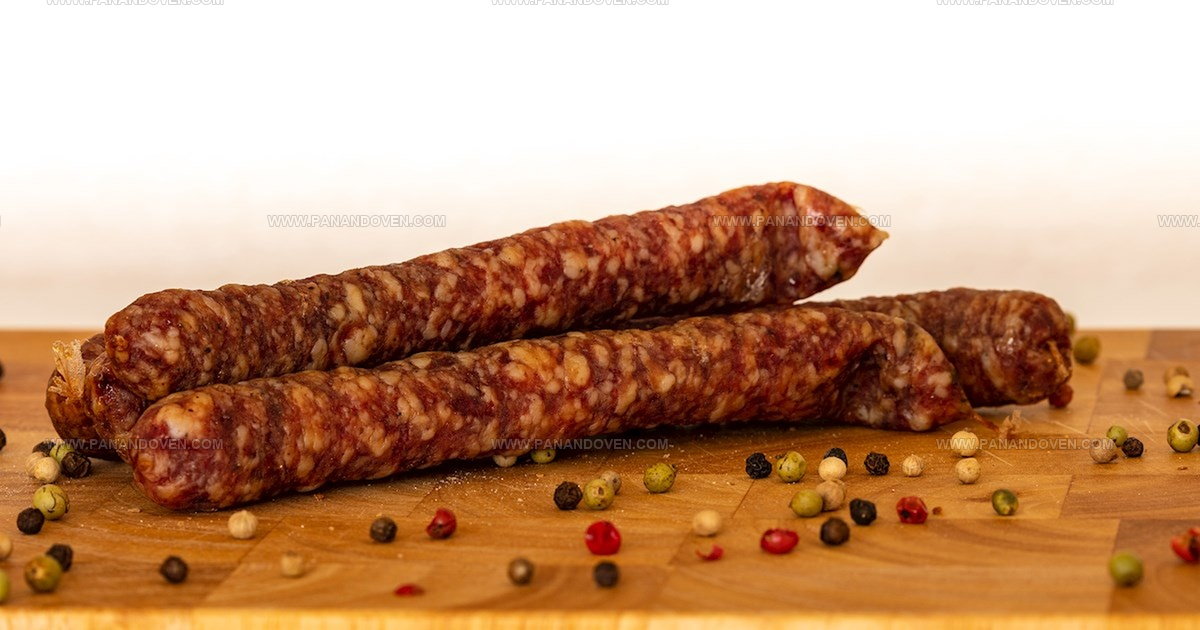
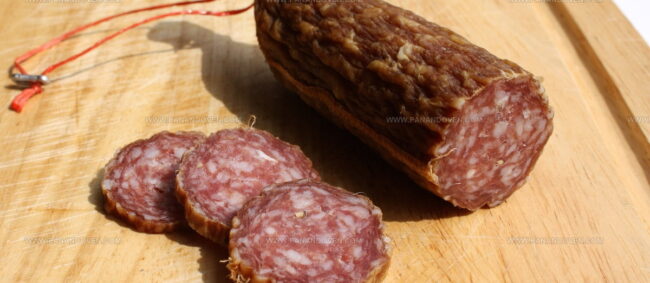
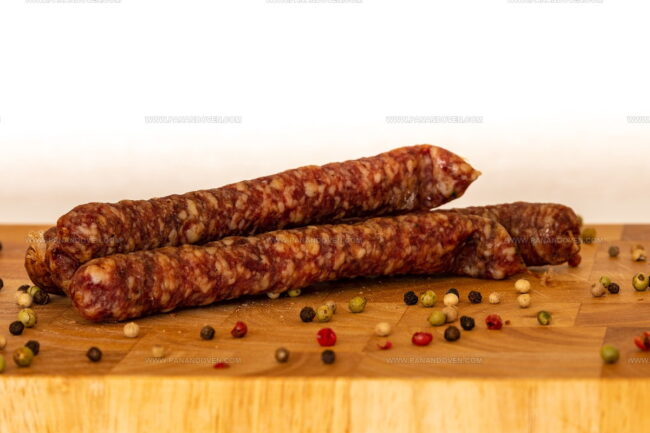
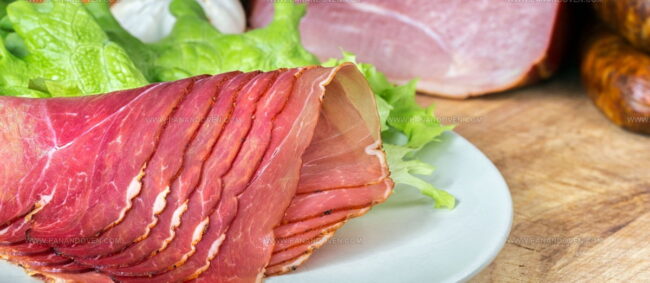
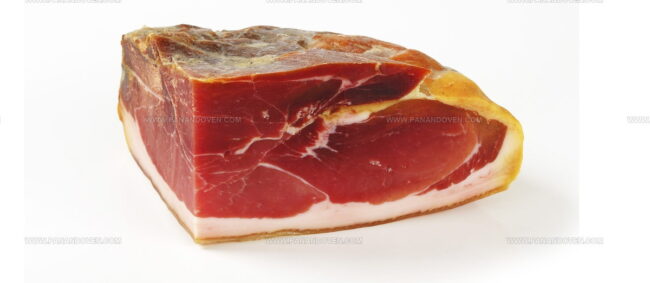
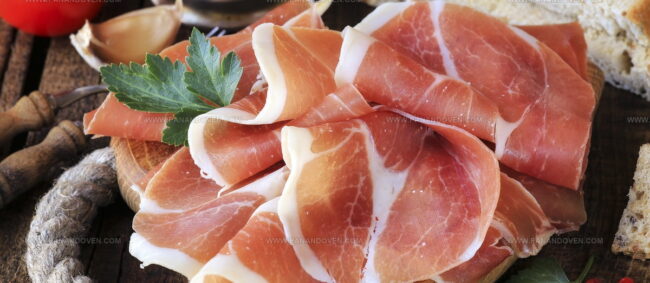
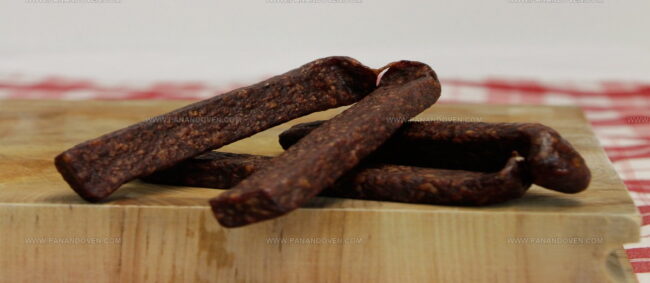
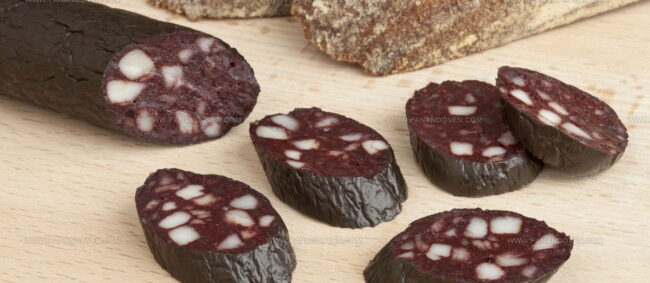
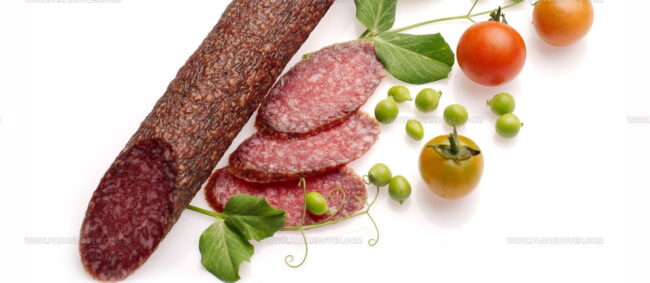
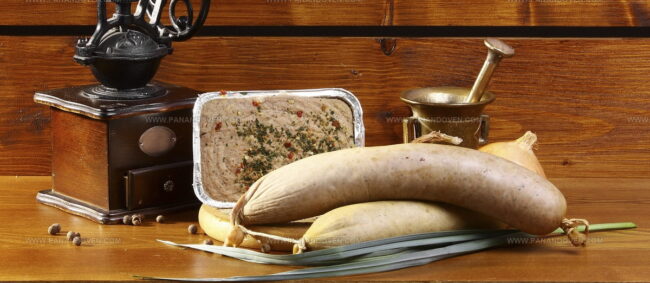
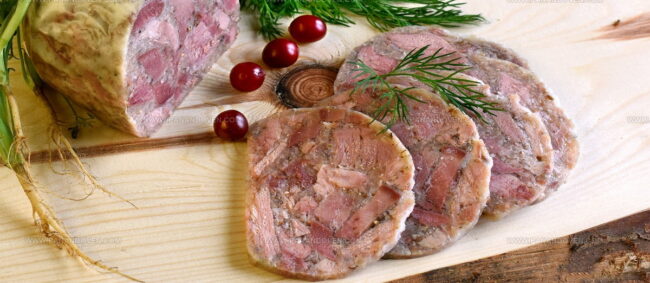
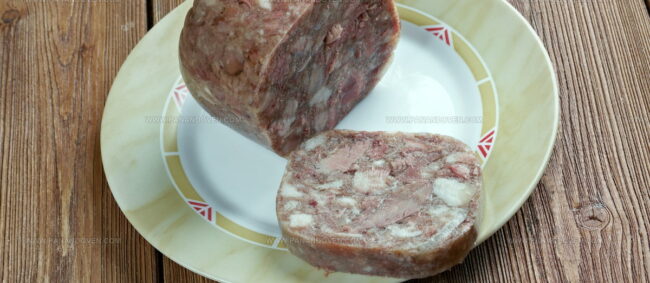
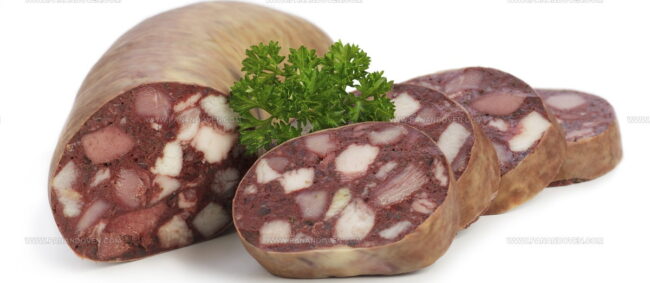
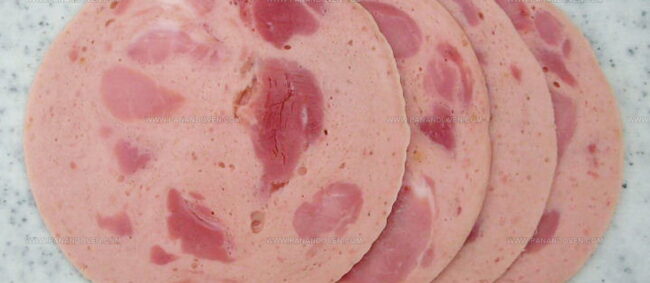


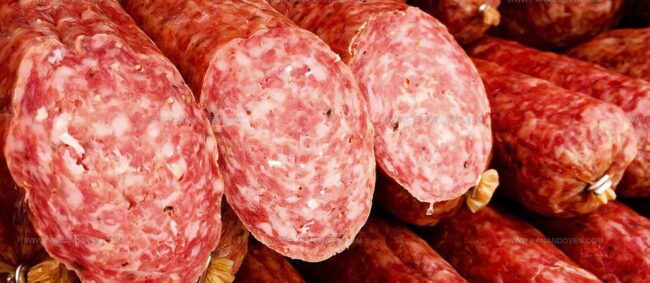
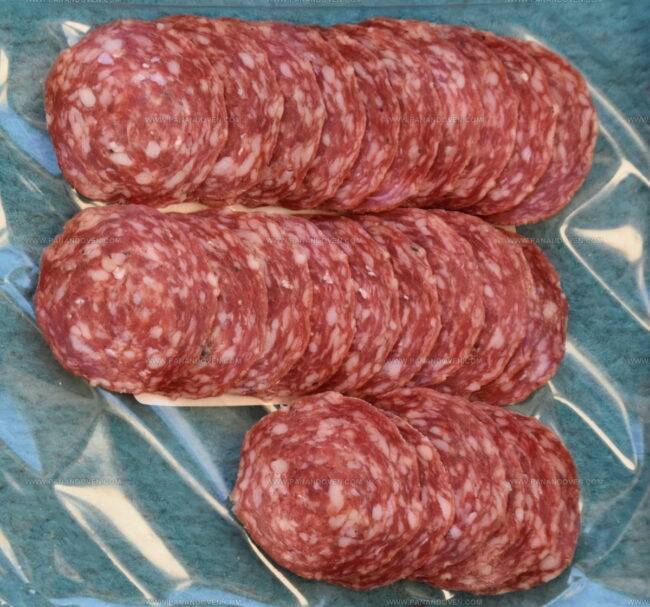
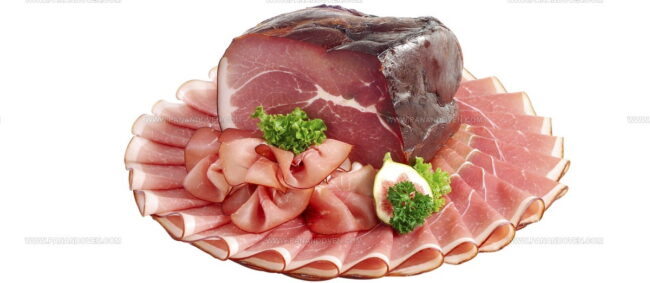
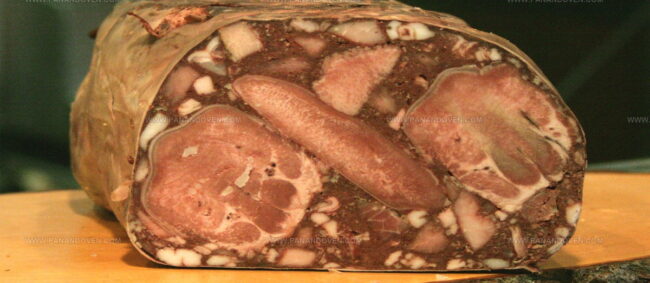
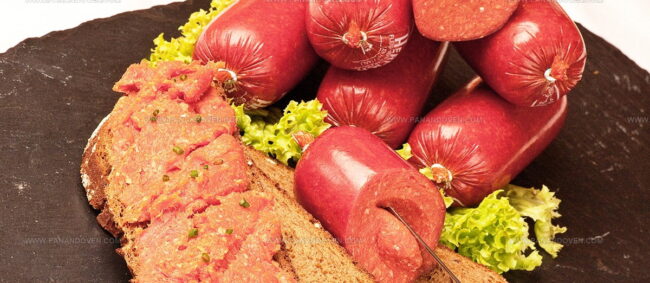

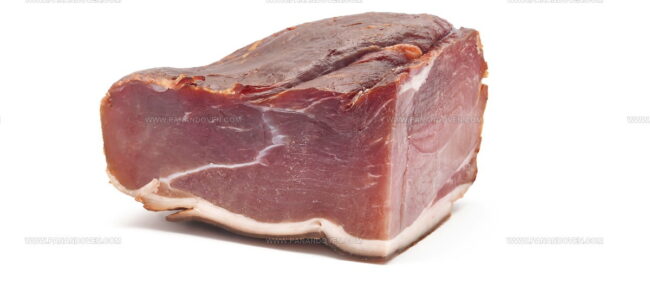
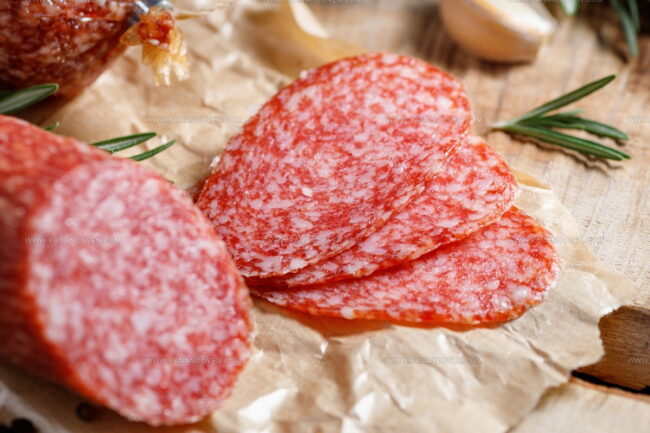
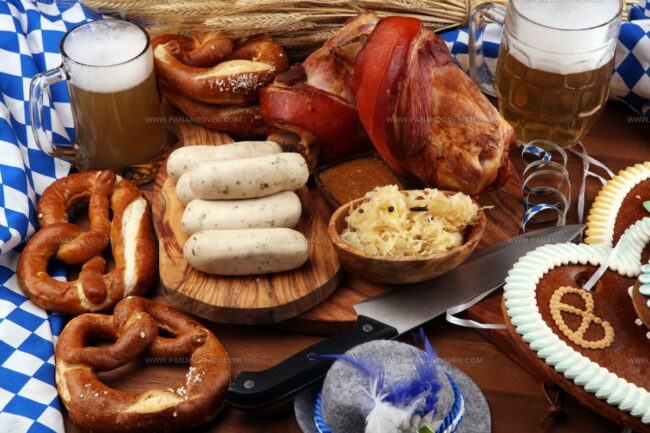
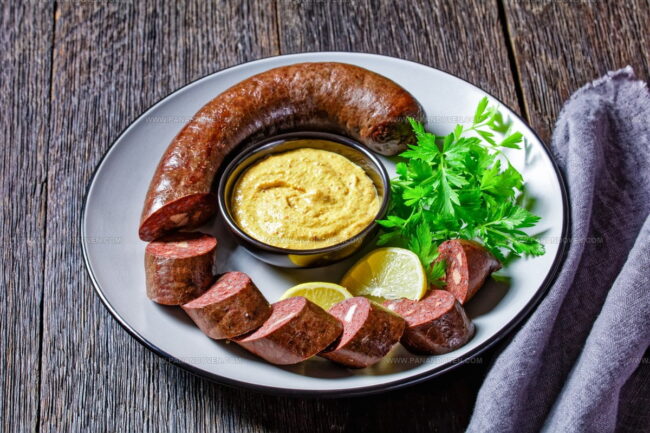
Clara Thompson
Recipe Developer & Food Educator
Expertise
Plant-based and vegetarian recipe development, Nutritional analysis and meal planning, Culinary education and workshop facilitation, Content writing with a focus on healthy living
Education
Diploma in Culinary Arts, Mt. San Jacinto College, CA
Focus: Comprehensive culinary training with an emphasis on sustainable cooking practices.
Certificate in Nutrition and Healthy Living, Cornell University (Online Program)
Focus: Understanding the principles of nutrition to create balanced and health-conscious recipes.
Clara lives where fresh ideas and fresh ingredients meet. She pairs her culinary know-how with her passion for healthy, planet-friendly cooking.
For Clara, good food should taste great, nourish your body, and feel easy to make. Her recipes highlight whole foods, colorful produce, and a deep respect for seasonal eating.